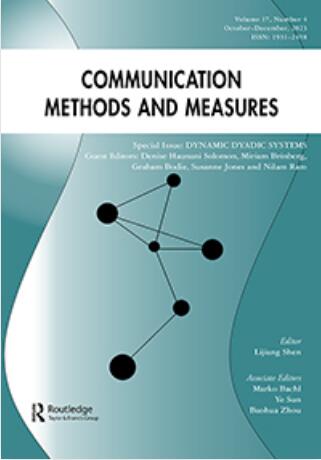使用对话分析建模模式的注释者间协议,用于对话
IF 3.7
1区 文学
Q1 COMMUNICATION
引用次数: 2
摘要
摘要本文提出了一种结合邻接对对话分析概念和对话行为的对话标注模式——对话分析建模模式(CAMS)。其目的是以独立于领域或主题的格式捕获对话的语义和句法结构,并促进对话的计算建模。由新手注释者承担的标注任务用于评估其对任务导向和非任务导向对话选择的有效性,并测量注释者之间的一致性。为了深化“人为因素”分析,我们还记录和检查了用户自述的自信分数和平均话语注释次数。对于面向任务的对话,注释者之间的一致性比非面向任务的对话更高,尽管对话本身的结构有更大的影响。我们进一步检验了两个加权一致性系数Alpha和Beta的预期一致性假设,并表明注释者使用相似的概率分布分配标签,小的变化可能导致有偏和无偏度量之间一致性值的大差异。本文章由计算机程序翻译,如有差异,请以英文原文为准。
Inter-annotator Agreement Using the Conversation Analysis Modelling Schema, for Dialogue
ABSTRACT We present the Conversation Analysis Modeling Schema (CAMS), a novel dialogue labeling schema that combines the Conversation Analysis concept of Adjacency Pairs, with Dialogue Acts. The aim is to capture both the semantic and syntactic structure of dialogue, in a format that is independent of the domain or topic, and which facilitates the computational modeling of dialogue. A labeling task undertaken by novice annotators is used to evaluate its efficacy on a selection of task-oriented and non-task-oriented dialogs, and to measure inter-annotator agreement. To deepen the “human-factors” analysis we also record and examine users’ self-reported confidence scores and average utterance annotation times. Inter-annotator agreement is shown to be higher for task-oriented dialogs than non-task-oriented, though the structure of the dialogue itself has a more significant impact. We further examine the assumptions around expected agreement for two weighted agreement coefficients, Alpha and Beta, and show that annotators assign labels using similar probability distributions, small variations can result in large differences in agreement values between biased and unbiased measures.
求助全文
通过发布文献求助,成功后即可免费获取论文全文。
去求助
来源期刊

Communication Methods and Measures
COMMUNICATION-
CiteScore
21.10
自引率
1.80%
发文量
9
期刊介绍:
Communication Methods and Measures aims to achieve several goals in the field of communication research. Firstly, it aims to bring attention to and showcase developments in both qualitative and quantitative research methodologies to communication scholars. This journal serves as a platform for researchers across the field to discuss and disseminate methodological tools and approaches.
Additionally, Communication Methods and Measures seeks to improve research design and analysis practices by offering suggestions for improvement. It aims to introduce new methods of measurement that are valuable to communication scientists or enhance existing methods. The journal encourages submissions that focus on methods for enhancing research design and theory testing, employing both quantitative and qualitative approaches.
Furthermore, the journal is open to articles devoted to exploring the epistemological aspects relevant to communication research methodologies. It welcomes well-written manuscripts that demonstrate the use of methods and articles that highlight the advantages of lesser-known or newer methods over those traditionally used in communication.
In summary, Communication Methods and Measures strives to advance the field of communication research by showcasing and discussing innovative methodologies, improving research practices, and introducing new measurement methods.
 求助内容:
求助内容: 应助结果提醒方式:
应助结果提醒方式:


